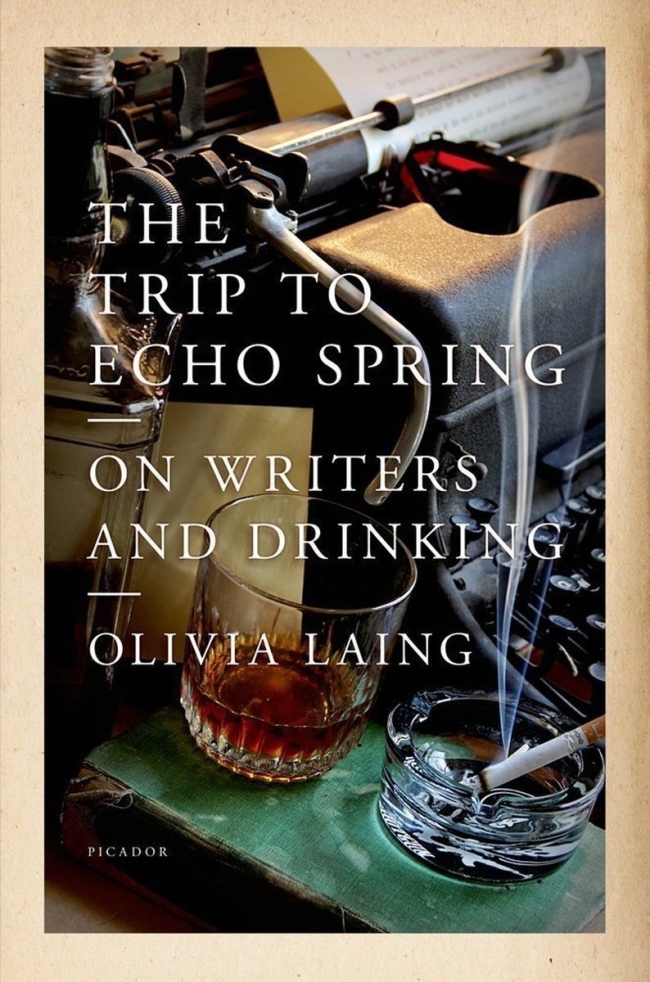
In this reflection on six great alcoholic American writers ― John Cheever, Raymond Carver, F. Scott Fitzgerald, Ernest Hemingway, John Berryman and Tennessee Williams ― Olivia Laing emerges as a kind of British Susan Orlean, combining nonfiction narrative, travel writing, literary criticism and a touch of memoir in a personable style. While it’s rare to quote blurbs in a book review (with good reason), Hilary Mantel, of “Wolf Hall” fame, says something on the book’s back cover that is worth repeating: “I’ve been trying to work out exactly how Olivia Laing drew me in, because I hardly drink myself and I have no particular attachment to the group of writers she describes.”
Well, I’m no Hilary Mantel. But balancing my a priori interest in the topic and the authors with a potentially numbing familiarity with them, I believe I was won over by the same dreamily engrossing quality of the book as she.
Laing takes her title from a passage in “Cat on A Hot Tin Roof”; Brick, the alcoholic son, escapes a lecture from Big Daddy by taking a “little short trip to Echo Spring.” This is code for the liquor cabinet, and the brand of bourbon inside it. Laing’s own journey to the metaphorical Echo Spring is a long meander by train, plane and automobile covering all the cities associated with these authors. She begins at the Elysee Hotel in New York, where Williams died, heads south to Key West and New Orleans, back north to Berryman’s St. Paul, then to Port Angeles, Wash., where Raymond Carver spent his joyfully sober last years. Along the way, she describes and analyzes texts by each writer, some very famous, some less known.
Her descriptions of the landscape she sees, the conversations she overhears and the people she runs into are sparkling. In North Dakota, she sees “cataracts of ice shone blue, silver, grey, pewter and sandy brown, the colors entwined like marble,” then moves on to macaroni and cheese for lunch in the dining car with a man named Bob, who’d been Bill Gates’ electrician, and two women “one ... very dippy, the other stern.” Her pleasant encounter with these people sends her into a meditation on Berryman’s difficulty in bonding with others, the sort of empathetic leap Laing is so good at. “That’s what alcoholism does to a writer. You begin with alchemy, hard labor, and end by letting some grandiose degenerate, some awful aspect of yourself, take up residence at the hearth, the central fire, where they set to ripping out the heart of the work you’ve yet to finish.”
Without building to a specific point or climax, Laing keeps you on board through her journey, which ends at Carver’s grave, and then tacks on two key lists for reference. One, the birth and death dates of her subjects. Two, the 12 steps of Alcoholic Anonymous. Your head filled with the questions and answers so interestingly raised here, you will want to take a long look at both.
By Marion Winik
(Newsday)
(MCT Information Services)
Well, I’m no Hilary Mantel. But balancing my a priori interest in the topic and the authors with a potentially numbing familiarity with them, I believe I was won over by the same dreamily engrossing quality of the book as she.
Laing takes her title from a passage in “Cat on A Hot Tin Roof”; Brick, the alcoholic son, escapes a lecture from Big Daddy by taking a “little short trip to Echo Spring.” This is code for the liquor cabinet, and the brand of bourbon inside it. Laing’s own journey to the metaphorical Echo Spring is a long meander by train, plane and automobile covering all the cities associated with these authors. She begins at the Elysee Hotel in New York, where Williams died, heads south to Key West and New Orleans, back north to Berryman’s St. Paul, then to Port Angeles, Wash., where Raymond Carver spent his joyfully sober last years. Along the way, she describes and analyzes texts by each writer, some very famous, some less known.
Her descriptions of the landscape she sees, the conversations she overhears and the people she runs into are sparkling. In North Dakota, she sees “cataracts of ice shone blue, silver, grey, pewter and sandy brown, the colors entwined like marble,” then moves on to macaroni and cheese for lunch in the dining car with a man named Bob, who’d been Bill Gates’ electrician, and two women “one ... very dippy, the other stern.” Her pleasant encounter with these people sends her into a meditation on Berryman’s difficulty in bonding with others, the sort of empathetic leap Laing is so good at. “That’s what alcoholism does to a writer. You begin with alchemy, hard labor, and end by letting some grandiose degenerate, some awful aspect of yourself, take up residence at the hearth, the central fire, where they set to ripping out the heart of the work you’ve yet to finish.”
Without building to a specific point or climax, Laing keeps you on board through her journey, which ends at Carver’s grave, and then tacks on two key lists for reference. One, the birth and death dates of her subjects. Two, the 12 steps of Alcoholic Anonymous. Your head filled with the questions and answers so interestingly raised here, you will want to take a long look at both.
By Marion Winik
(Newsday)
(MCT Information Services)









![[Kim Seong-kon] Democracy and the future of South Korea](http://res.heraldm.com/phpwas/restmb_idxmake.php?idx=644&simg=/content/image/2024/04/16/20240416050802_0.jpg&u=)







![[KH Explains] Hyundai's full hybrid edge to pay off amid slow transition to pure EVs](http://res.heraldm.com/phpwas/restmb_idxmake.php?idx=652&simg=/content/image/2024/04/18/20240418050645_0.jpg&u=20240418181020)

![[Today’s K-pop] Zico drops snippet of collaboration with Jennie](http://res.heraldm.com/phpwas/restmb_idxmake.php?idx=642&simg=/content/image/2024/04/18/20240418050702_0.jpg&u=)